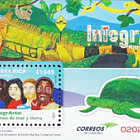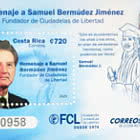About Costa Rica
Costa Rica, known as the "Rich Coast," is a captivating country nestled in Central America. This tropical paradise is renowned for its incredible biodiversity, stunning landscapes, and commitment to sustainability.
Costa Rica is a nature lover's dream come true. It boasts lush rainforests, misty cloud forests, and pristine beaches that are home to an astonishing variety of wildlife. From sloths lazily hanging from tree branches to colourful toucans soaring through the canopy, Costa Rica's forests are alive with an abundance of unique flora and fauna. National parks like Manuel Antonio and Monteverde offer incredible opportunities for wildlife spotting, hiking, and immersing oneself in the wonders of the natural world.
But Costa Rica is not just about its natural beauty. The country also exudes a vibrant culture and a warm hospitality known as "Tico" charm. The locals, known as Ticos and Ticas, are friendly and welcoming, always ready to share their love for their country. Visitors can experience the rich traditions and customs of Costa Rica through traditional music, dance, and festivals. The delicious cuisine, featuring staples like gallo pinto (rice and beans) and ceviche, tantalises the taste buds and showcases the country's flavourful culinary heritage.
One of the standout features of Costa Rica is its dedication to environmental sustainability. The country is a global leader in eco-tourism and is committed to protecting its natural resources. Costa Rica has made significant strides in renewable energy, with a large portion of its electricity coming from renewable sources. It also boasts an extensive network of national parks and reserves, preserving its breathtaking landscapes and diverse ecosystems for future generations.
Costa Rica has produced its own stamps since 1863.
The first issue of stamps was printed by the American Bank Note Co., and consisted of values "Medio Real" (Blue), "Dos Reales" (Red), "Cuatro Reales" (Green) and "Un Peso" (Orange).
In 1883, following the change in currency from Reales to the new Pesos and Centavos, the issue of 1863 was surcharged with new values for postal use: 1 Centavos, 2 Centavos, 5 Centavos (all over the Medio Real stamp), 10 Centavos (over Dos Reales) and 20 Centavos (over Cuatro Reales). The 5, 10 and 20 Centavos were also surcharged "U.P.U."
The first issue in the new Colón currency was dated 1900 and put into circulation in 1901. It consists of ten stamps with values ranging from 1 Céntimo up to 10 Colones. The Colón currency had been introduced in 1896, but stamps with the old currency were still in use, and continued to be used after 1901 for several years.





